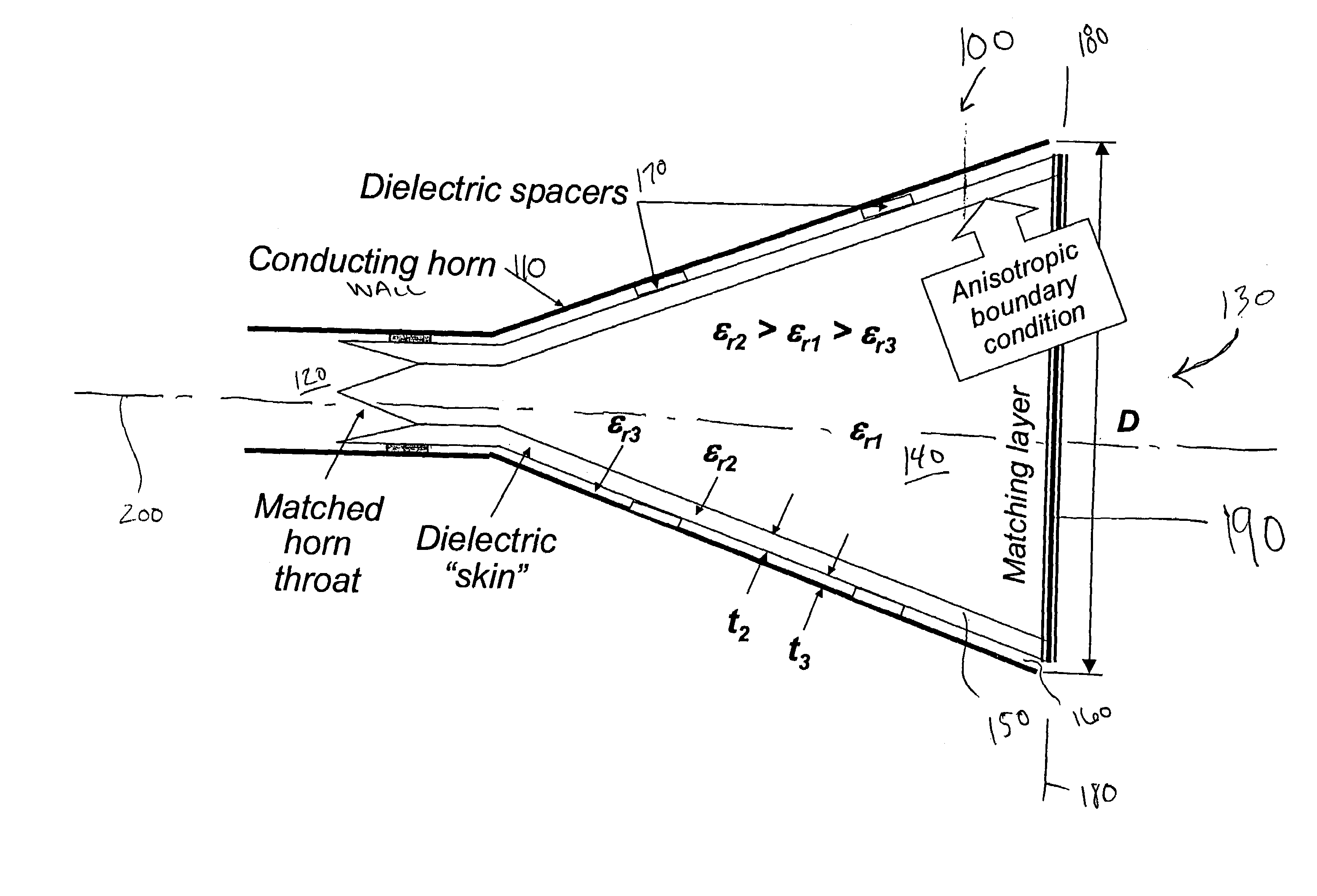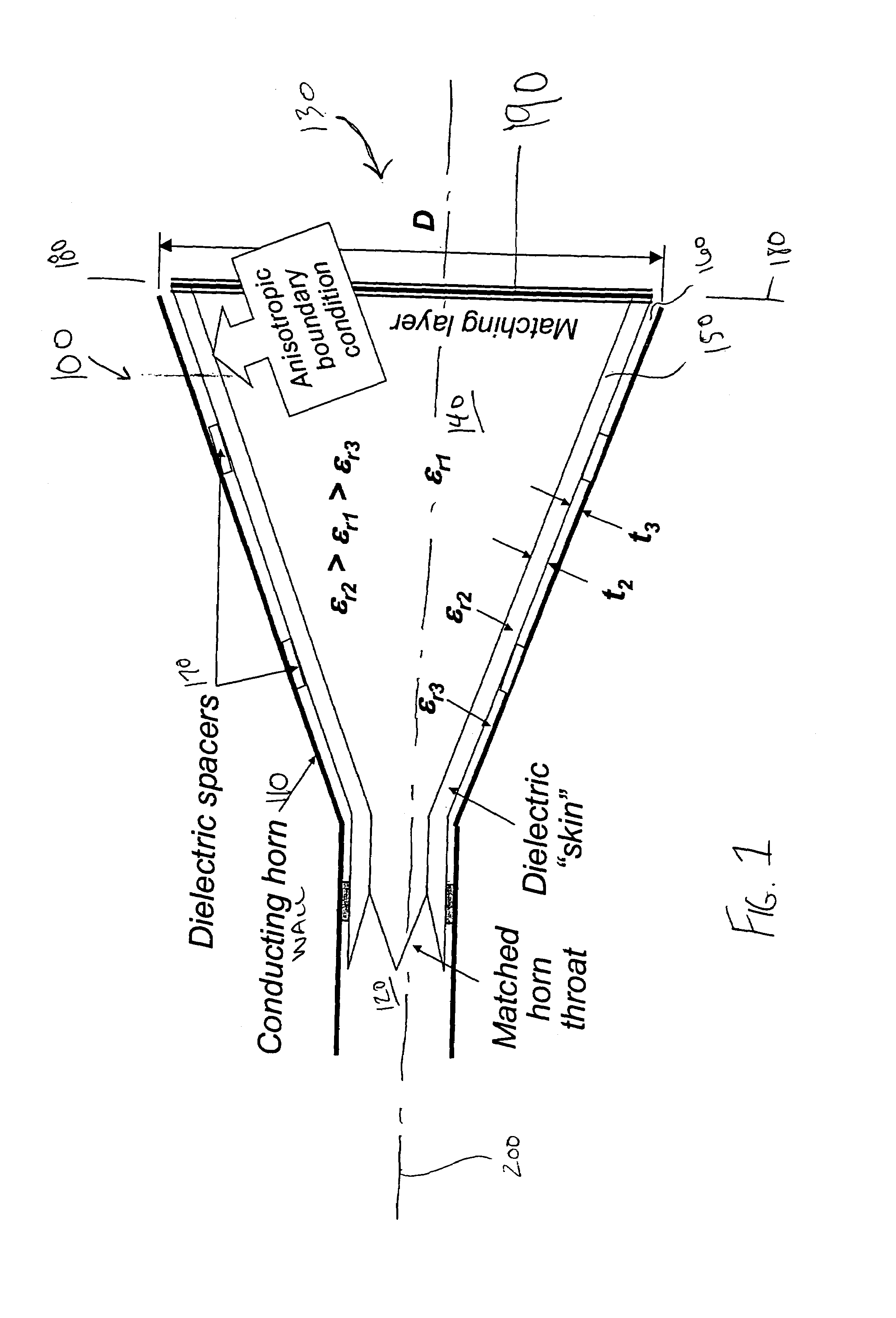Hybrid-mode horn antenna with selective gain
a horn antenna and hybrid-mode technology, applied in the field of horn antennas, can solve the problems of small intrinsic bandwidth of endfire horns, less mechanical robustness, and other non-hybrid-mode horns that only work for limited aperture sizes, and achieve simple mechanically, facilitate boundary conditions design, and large bandwidth
- Summary
- Abstract
- Description
- Claims
- Application Information
AI Technical Summary
Benefits of technology
Problems solved by technology
Method used
Image
Examples
Embodiment Construction
[0038]In one embodiment, a new and mechanically simple dielectric loaded hybrid-mode horn is presented. In alternative embodiments of the present invention, the horn satisfies hard boundary conditions, soft boundary conditions, or boundaries between hard and soft under balanced hybrid conditions (low cross-polarization). Like other hybrid mode horns, the present design is not limited in aperture size. In some embodiments, design curves were developed based on a plane wave model, and radiation performance was computed based on a cylindrical waveguide model. In one embodiment, aperture efficiency of about ninety-four percent (94%) has been computed at the design frequency for a 3.38λ aperture with hard boundary condition and a dielectric constant of 4.0. The same horn with a dielectric constant of 2.5 can provide higher than about eighty-nine percent (89%) aperture efficiency and under −30 decibels (dB) cross-polarization over about a fifteen percent (15%) frequency range. Predicted p...
PUM
 Login to View More
Login to View More Abstract
Description
Claims
Application Information
 Login to View More
Login to View More - R&D
- Intellectual Property
- Life Sciences
- Materials
- Tech Scout
- Unparalleled Data Quality
- Higher Quality Content
- 60% Fewer Hallucinations
Browse by: Latest US Patents, China's latest patents, Technical Efficacy Thesaurus, Application Domain, Technology Topic, Popular Technical Reports.
© 2025 PatSnap. All rights reserved.Legal|Privacy policy|Modern Slavery Act Transparency Statement|Sitemap|About US| Contact US: help@patsnap.com



